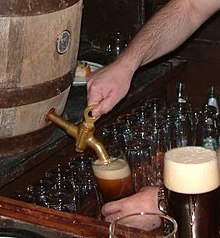User:Craytov

Rhabdomyolysis Epidemiology[edit]
Statistics[edit]
Rhabdomyolysis is a kind of disease that occurs in the kidneys. Each year there are over 20 million cases of kidney injury that occur in the United States and about 7 to 10% of these injuries are a case of Rhabdomyolysis [1]. And it is also about 15% of all the cases of renal failure[2].
Who gets it[edit]
Most of the cases of Exertional Rhabdomyolysis that have been reported in the United States have reported in mainly athletes and active people as well as many of the military and paramilitary personnel [3]. So physically active people are at greater risk to developing this disease. The majority of the cases that have been reported having to do with athletes that get Exertional Rhabdomyolysis have been caused by being involved in hard training or exercising in heat. According to a study women have the same risk of developing Rhabdomyolysis as men, but men have a greater chance of developing a more severe case of Rhabdomyolysis[4].
Risk Factors[edit]

The risk of developing Rhabdomyolysis becomes greater in people who have contact with illicit drugs and also those that abuse alcohol . The risk factors for Rhabdomyolysis include but are not limited to: alcoholism, genetics, heat intolerance, Ischemia in muscles, low phosphate levels, seizures, extreme exercise, extreme shivering, and trauma. The consumption of nutritional supplementation is also associated with the developing of Rhabdomyolysis [5]. Genetic inheritance of Rhabdomyolysis appears in early childhood but the risk of developing this disease is higher in young adults as they are the most physically active people.
- ^ Bosch, Xavier, Esteban Poch, and Josep M. Grau. "Rhabdomyolysis and Acute Kidney Injury." New England Journal of Medicine 361.1 (2009): 62-72. Print.
- ^ Boutaud, Olivier, and L. Jackson Roberts. "Mechanism-based Therapeutic Approaches to Rhabdomyolysis-induced Renal Failure." Free Radical Biology and Medicine 51.5 (2011): 1062-067. Print.
- ^ O'Connor, Francis G. "Return to Physical Activity After Exertional Rhabdomyolysis." 7.6 (2008): 328-31. Print
- ^ Lin, H., Chie, W., & Lien, H. (2006). Epidemiological analysis of factors influencing an episode of exertional rhabdomyolysis in high school students. American Journal of Sports Medicine, 34(3), 481-486. Retrieved from http://search.proquest.com/docview/17090416?accountid=10357
- ^ Thomas, David Q. "Exertional Rhabdomyolysis: What Is It and Why Should We Care?" Ovaertraining Can Have Dangerous Effects 83.1 (2012): 46-51. Print
